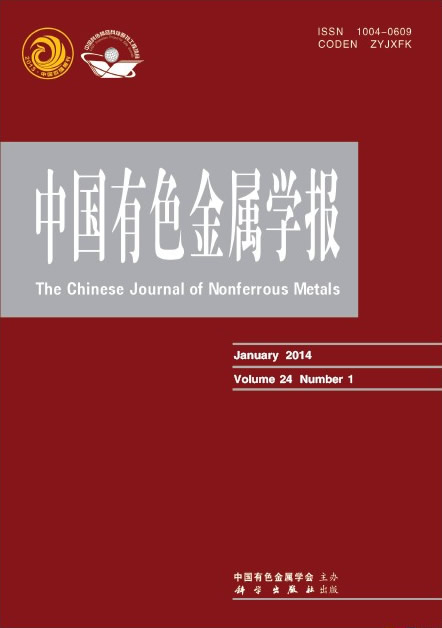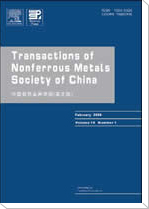(1. 华中科技大学 化学系, 武汉 430074;
2. 南阳理工学院 生物与化学工程系, 南阳 473066)
摘 要: 针对不同均匀化处理方式会引起合金微观组织和电化学性能变化现象, 采用电子探针(EPMA)、 动电位极化及恒电流极化等方法研究不同热处理(水淬、 空冷、 炉冷)方式对Al-Zn-In合金的微观组织和合金在3%NaCl溶液中的开路电位、 工作电位、 腐蚀形貌和电流效率等电化学性能的影响。 结果表明: 510 ℃, 10 h的均匀化处理使晶界偏析减少, 抑制析氢自腐蚀和晶粒脱落, 提高电流效率, 但对阳极开路电位、 工作电位及溶解行为的影响并不明显, 且水淬处理试样的电流效率最高。
关键字: 热处理; 铝合金; 牺牲阳极; 电流效率
(1. Department of Chemistry, Huazhong University of Science and Technology, Wuhan 430074, China;
2. Department of Biological and Chemical Engineering,
Nanyang Institute of Technology, Nanyang 473066, China)
Abstract: The effect of different heat treatments (quenching in water, cooling in air, cooling in furnace) on the microstructure and electrochemical performance of Al-Zn-In alloys in 3%NaCl solution were investigated by electron probe microanalysis (EPMA), potentiodynamic and galvanostatic polarizations. The results show that the homogenization at 510 ℃ for 10 h reduces the grain boundary segregation, restrains the hydrogen evolution and grain falling and improves the current efficiency. But the influences of homogenization on the open circuit potential, operating potential and dissolving behaviour are unobvious. The anode current efficiency of water-quenched samples is biggest.
Key words: heat treatment; aluminium alloys; sacrificial anode; current efficiency


